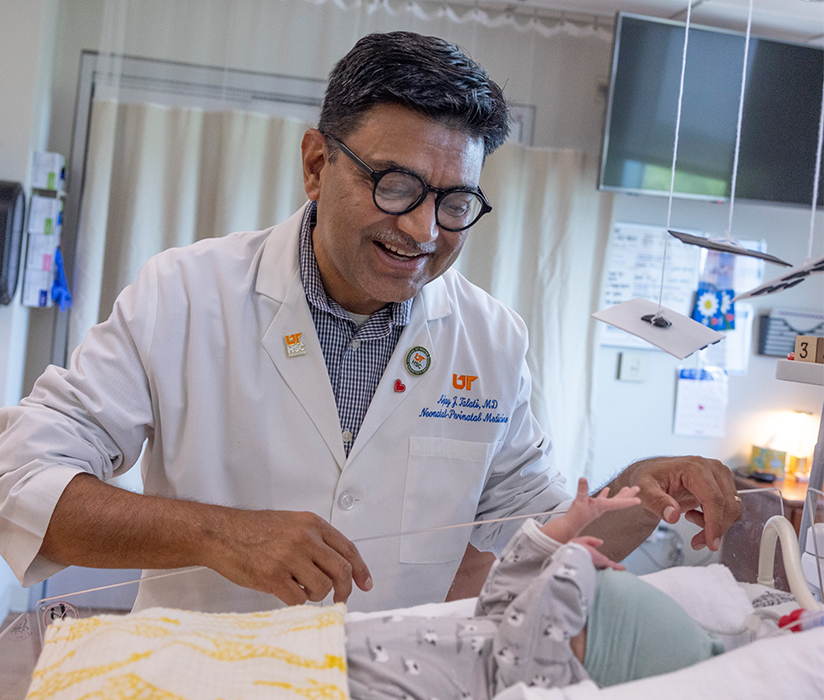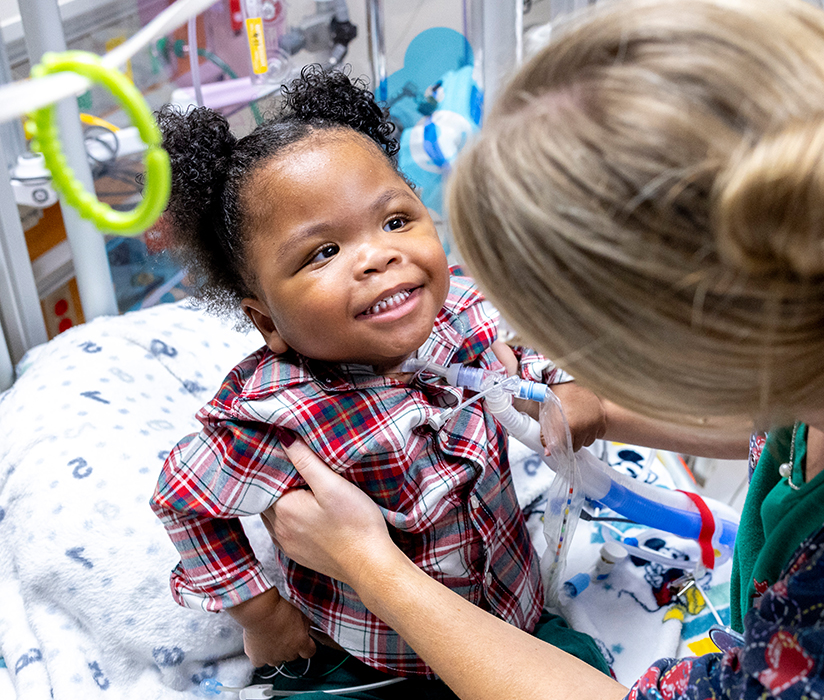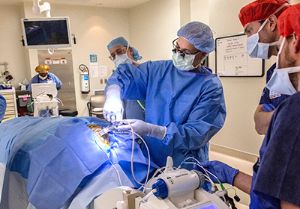Research: Mycobiome in preterm infants predicts the development of bronchopulmonary dysplasia
In very low birth weight preterm newborns, the composition of the gut mycobiome, or the fungi in the intestines, predicts later development of bronchopulmonary dysplasia (BPD), according to research published in Microbiome by Le Bonheur Chief of Neonatology Ajay Talati, MD, and other researchers. The results of this research suggest the existence of a gut-lung axis and position the gut mycobiota as a potential therapeutic target for newborn lung disease. This is one of the most extensive studies of the multi-kingdom intestinal microbiome in preterm newborns.
“This research is incredibly meaningful for a patient population that currently has limited available interventions,” said Talati. “Our findings suggest the causality of the fungal mycobiome in the development of BPD as well as a potential therapeutic strategy for the future.”
BPD is a chronic lung disease found in premature infants and the most common morbidity of prematurity, according to researchers. Lungs that are already small and underdeveloped at birth can be injured by the supplemental oxygen required for survival. Researchers used a two-part study to measure if the intestinal microbes had an influence on the potential for injury to the lungs and if this effect was transferable and modifiable.
First, researchers collected the first available true stool sample from 102 very low birth weight preterm newborns within the first two weeks of life. They compared the intestinal microbiomes of those who later developed BPD and those who did not.

Le Bonheur Chief of Neonatology Ajay Talati, MD, (above) recently published research that shows the connection between the gut mycobiome and later development of bronchopulmonary dysplasia.
Results from this comparison showed that the gut mycobiome of infants who later develop BPD is unique several weeks to months before diagnosis. The mycobiomes between the two groups differed in community diversity, composition and connectivity, with those developing BPD being the least connected and with the most types of rare fungi. In addition, babies who were assigned male at birth and later developed BPD had the least interconnected mycobiomes, which could be a cause for the worse outcomes seen in male infants with BPD.
“Through our results, we found that baseline compositional differences in the gut mycobiome predicted the eventual development of BPD, including sex-specific differences,” said Talati.
The second phase of the study was to determine if this effect was transferable and modifiable. Using a murine model, researchers conducted a fecal microbiota transplant (FMT) from infants who did develop BPD and those who did not. Those who received the FMT from an infant with BPD had worse lung injury after exposure to excess oxygen measured by increased pulmonary resistance and changes in blood vessels consistent with pulmonary hypertension. These results showed that the gut microbiome of an infant with BPD can augment lung injury after exposure to excess oxygen.

Bronchopulmonary dysplasia is a chronic lung disease and the most common morbidity of prematurity. Recently published research identifies a potential therapeutic target for this disease.
Finally, researchers inhibited the development of fungi and augmented it in two different groups. Inhibiting fungi development reduced the extent of lung injury after excess oxygen exposure and improved lung development and function. Augmenting the fungal development increased the severity of lung injury. This further suggests that changing fungal colonization modulates the extent of hyperoxia-induced lung injury.
“All of our findings suggest the existence of a gut-lung axis, where the mycobiome is directly influencing the potential for lung injury and altering the mycobiome can alter the extent of lung injury,” said Talati.
Ultimately, researchers uncovered through this study that the compositional differences in the gut mycobiome can predict the development of BPD. Analyses demonstrated that those who did not develop BPD had more uniform composition of the mycobiome, while those who did develop BPD were more disparate. This effect was transferable, where modifying fungal colonization could modulate the severity of lung injury.
“More research is needed into the ways that the mycobiome impacts the development of BPD, but, through this work, we have identified a potential therapeutic strategy for this growing group of babies who desperately need viable interventions,” said Talati.
Help us provide the best care for kids.
Le Bonheur Children's Hospital depends on the generosity of friends like you to help us serve 250,000 children each year, regardless of their family’s ability to pay. Every gift helps us improve the lives of children.
Donate Now







